What is Solana Alpenglow? A GetBlock Review

Vance Wood
October 3, 2025
17 min read
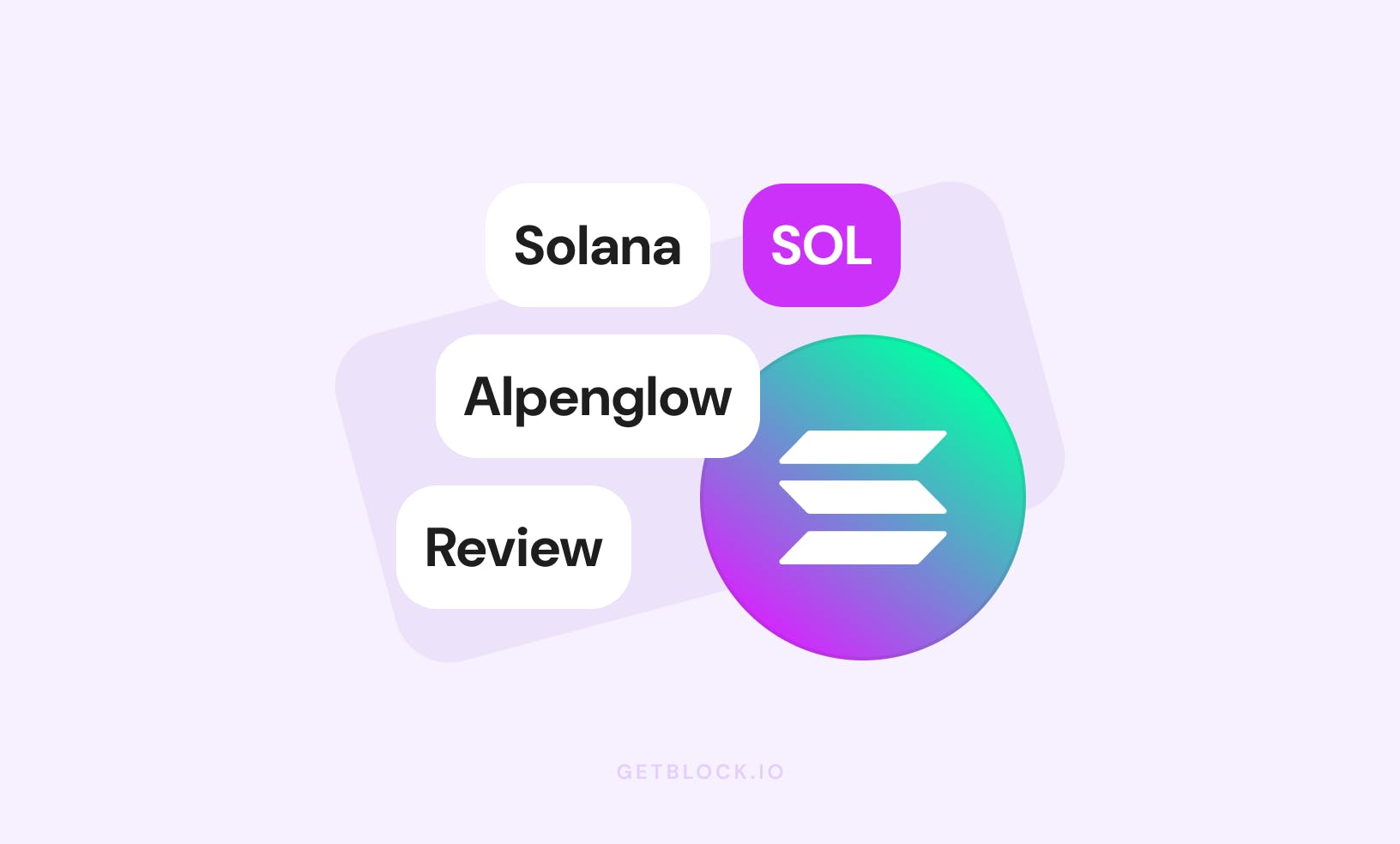
With the greatly increased adoption, Solana is undergoing massive changes. Alpenglow is a new consensus mechanism proposed for Solana to replace its well-known Proof-of-History (PoH) and achieve even better results in terms of speed, scalability, and decentralization.
As one of the largest Solana node providers, GetBlock watches these changes closely, ready to adapt its nodes.
What is Solana Alpenglow? Quick Facts
Solana Alpenglow is a novel consensus mechanism for Solana blockchain. Alpenglow is poised to deliver a significant boost in Solana's performance, speed, and cost efficiency. Here is a quick summary.
Solana Alpenglow is aimed at improving Solana’s network resilience, transaction finality speed, and accessibility for validators.
Key elements of Solana Alpenglow are Rotor and Votor, novel mechanisms for data processing and voting.
These two mechanisms allow off-chain voting and optimized block production, reducing onchain load and computational costs.
The upgrade has successfully passed the voting phase and will be activated in early 2026, as outlined in the governance plans.
In this guide, GetBlock overviews the architecture of Solana Alpenglow, its potential impact, and its role in Solana tech design. So, let’s explore each point further!
Current situation: Proof-of-History (PoH) and its limitations
Before we can explore what Alpenglow is, we should focus on the current state of Solana.
When Solana's mainnet was first launched in 2020, its consensus mechanism was a brand-new approach in blockchain technology. Being a modified Proof-of-Stake (PoS) consensus, Proof-of-History (PoH) uses encrypted sequences of transaction timestamps to prove that they’re legit. As a result of its efficiency, Solana is now considered the fastest blockchain in the world, along with its closest competitor, Sui.
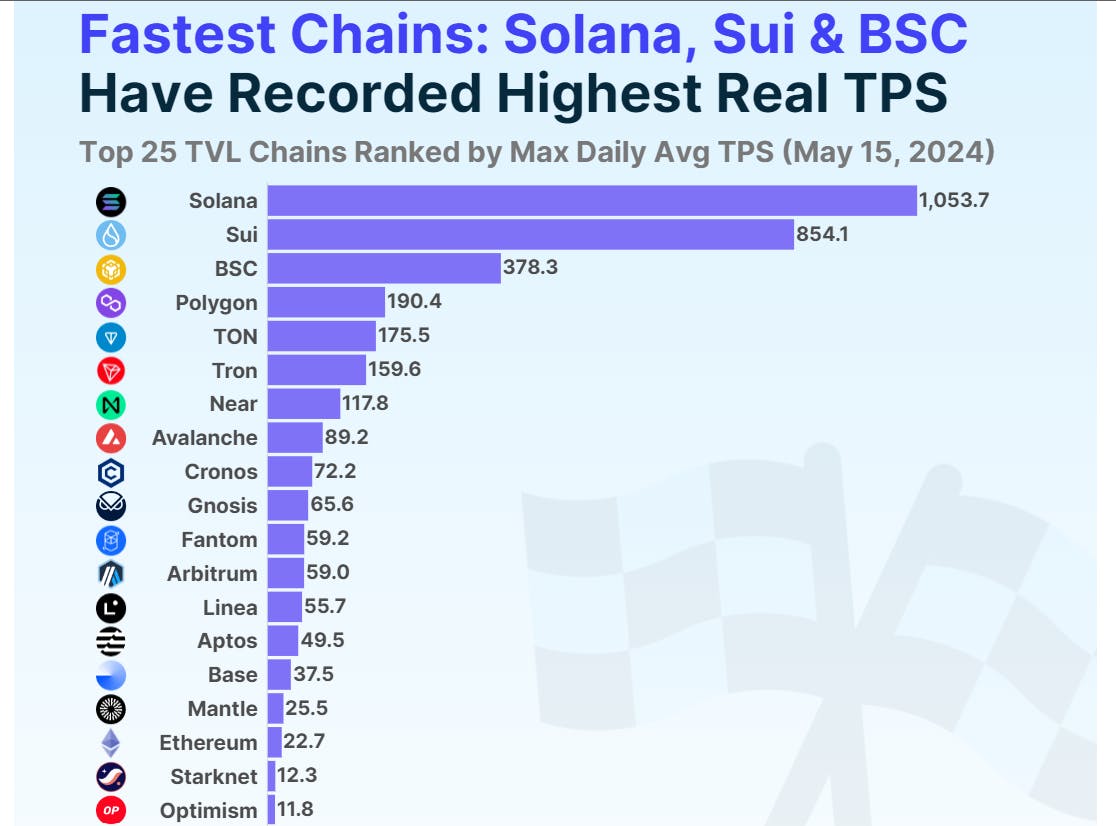
Source: CoinGecko
However, it inevitably led to increased complexity of Solana’s architecture and, as a result, to serious drawbacks, which include:
high hardware cost
large validator fees
network resilience issues
and many more
But first, let’s explore Solana’s consensus and its benefits.
Innovational potential of Solana consensus
Similar to Proof-of-Stake, Proof-of-History uses staked SOL tokens for validating transactions, but instead of simply staking tokens, Solana validators generate a unique, continuous sequence of hashes, encrypting all transactions and recording them into the blockchain.
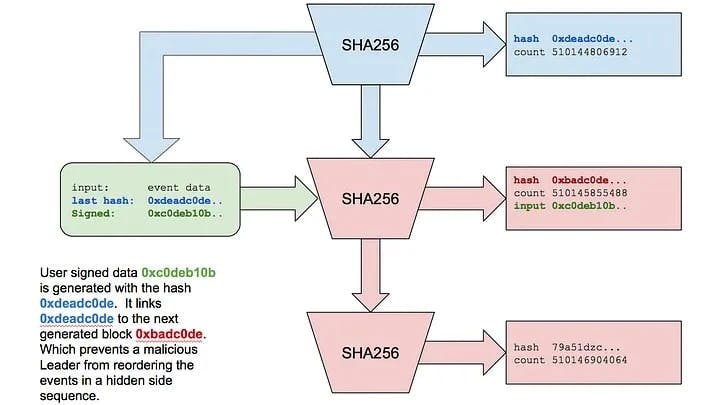
Source: Anatoly Yakovenko’s Medium
Its crucial component is the Verifiable Delay Function (VDF), which acts like a cryptographic clock and generates a hash repeatedly. The algorithm is the following:
An epoch starts with a new seed, based on the recent ledger state
Once a seed is chosen, a leader validator starts computing the VDF
As each validator generates a hash, a unique chain of hashes is built
When a transaction arrives, a leader integrates it into this chain
The chain serves as proof of history, and validators verify transactions based on it
Actually, Proof-of-History isn’t a proper consensus mechanism: it’s pre-consensus, which generates the hash sequences. Solana validators proceed with them similarly to other Proof-of-Stake blockchains, using its Tower BFT (Byzantine fault tolerance) consensus layer.
Limitations and issues
This method allows very quick and secure transaction validation, contributing to the exceptional speed and safety of Solana. However, generating a hash is very computationally intensive, and it also produces massive amounts of hash data with no practical sense other than tracking Solana’s history.
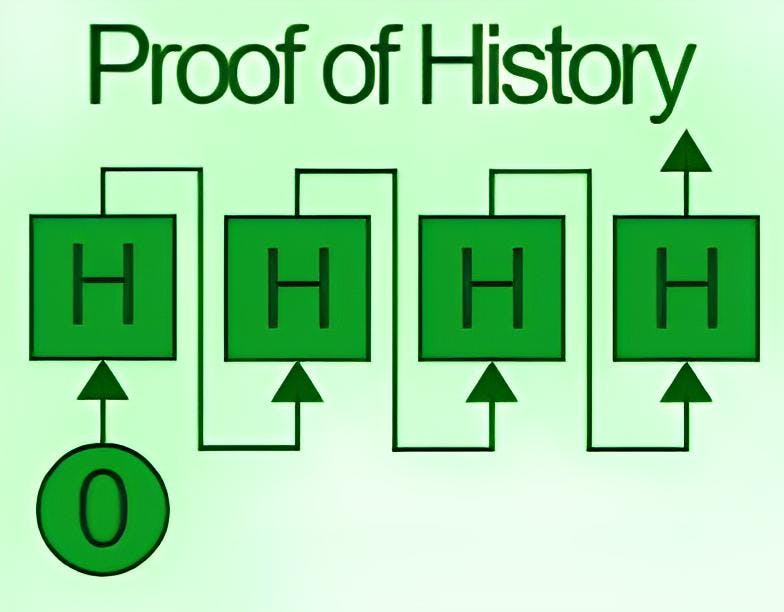
We’ve already pointed out that running a Solana validator is very expensive and requires tens of thousands of SOL to be at least minimally profitable. In addition, running a Solana node is generally much more complex compared to other chains. Solana nodes have very high hardware requirements and need precise monitoring to support them.
Explore our experience in improving Web3 infrastructure to deploy the fastest Solana nodes.
Another big issue is the extreme growth of Solana’s ledger due to the massive hash data production. Again, we’ve already pointed out that the Solana archive node weighs about 400 TB now and grows by 5+ TB each month.
While these two limitations are the most straightforward, there are others, less obvious ones, which are detrimental to the network’s resilience and development.
Despite having fast transactions, the finality speed of Solana is much lower: about 12.8 seconds take for the transaction to be finally incorporated into the blockchain.
All Solana validators must vote on-chain each epoch slot, which leads not only to large expenses (~1 SOL each day) but also overloads the network.
Solana has network resilience issues: every validator must vote continuously, and if about one-third of them are offline, the consensus may stall.
Besides high hardware cost, operating a Solana node is a tricky process by itself, which requires a lot of manual work from operators.
No wonder that with such restrictions, Solana becomes quite centralized. Only those with more than $10 million of capital and large operational capacities can afford to run Solana validators seamlessly. But as the chain continues to change and develop, modern solutions have been proposed to solve these issues.
Can a new Solana consensus solve these issues?
In 2025, Solana is thriving. Even though the beginning of the year was more fruitful than its end, the chain’s value is solid in October 2025. As more and more projects, tokens, and transactions land on Solana, network resilience and decentralization issues have become critical.
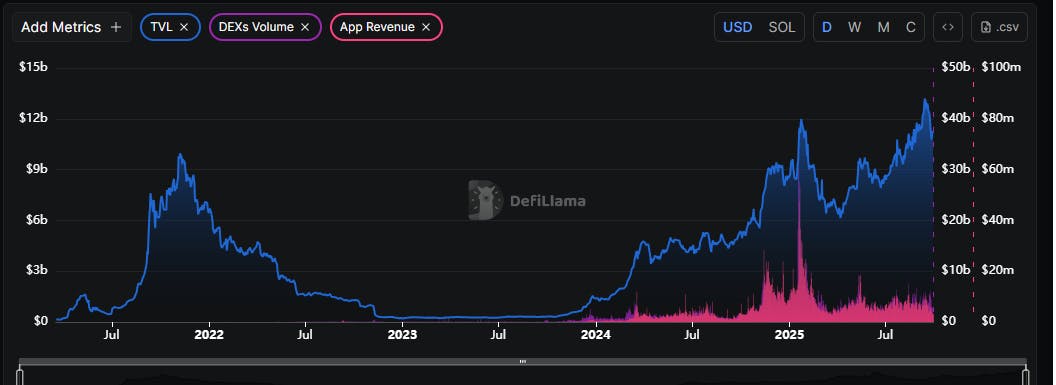
Source: DefiLlama
Alpenglow was proposed in 2025 as a method to solve these issues, as a renewed Solana consensus protocol. It replaces both Proof-of-History and Tower BFT with Rotor and Votor, mechanisms used for block propagation and voting, respectively. Let’s explore them further.
Rotor, a data dissemination tool, is based on the existing Solana Turbine mechanism to produce, split, and propagate blocks, but modifies it. It uses a single layer of relay nodes, which receive the block from a leader, split it, and distribute it among validators.
Votor, a new voting mechanism, is designed to transfer the voting off-chain, reducing expenses and network load. Votes are exchanged between validators and are aggregated into the Boneh–Lynn–Shacham (BLS) certificate, which is then submitted onchain.
Below, one can see how the Rotor distributes blocks among validators in one layer. A leader node sends block shards to relay nodes, which then distribute them to other validators.

Source: Helius (modified)
The other crucial component, Votor, proceeds with validator votes off-chain, reducing the load, and then produces a BLS certificate onchain according to the percentage of positive votes:
More than 80% positive: Fast finalization.
60–80% positive: Ordinary finalization.
Less than 40% positive: Skip certificate.

Source: Helius (modified)
Below, one can see a summary of Alpenglow solutions for current Solana issues.
Current Solana consensus limitations | Alpenglow potential solution |
Proof-of-History provides an ordered series of hashes that works as a cryptographic clock, producing large amounts of hash data | Rotor disseminates blocks into slices, and then relay nodes distribute them across validators, which is much simpler |
Tower BFT requires onchain voting, requiring large SOL spending and leading to chain overload and low finalization time | Votor introduces off-chain voting with a BLS certificate issued onchain, reducing network load, finalization time, and expenses |
Due to the Byzantine Fault Tolerance mechanism, if one-third of the validators are offline, the whole network may stall | Under Alpenglow’s fault tolerance, the network may stall if 20% of validators are offline and an additional 20% are malicious |
Validators must vote constantly, leading to a greatly redundant network load | Under Votor, validators can issue SkipVotes, reducing the load of empty slots |
Benefits and potential of Solana Alpenglow
Let’s summarize which specific benefits the Alpenglow consensus can bring to Solana.
Lower bandwidth costs: Off-chain voting and aggregated certificates cut down constant vote traffic, reducing validator communication overhead and saving networking resources.
Smaller ledger size: Skip certificates and compressed proofs mean fewer on-chain vote records, minimizing ledger bloat and storage requirements.
Faster finality: Consensus completes in 100–150 ms instead of ~13 seconds, enabling near-instant settlement and less speculative state maintenance.
Higher efficiency: Rotor streamlines block propagation with fewer hops and less redundancy, speeding up data dissemination across validators.
Operational savings: Leaner consensus and lighter state tracking lower CPU, memory, and disk strain, making node operations more cost-effective.
However, the implementation of the Alpenglow consensus can still lead to risks and trade-offs. Let’s explore them, as well.
While one of its core ideas is to make Solana more decentralized and accessible for validators, the SIMD-0326 proposal also includes the Validator Admission Ticket (VAT), at 1.6 SOL per epoch, and this barrier can still limit the decentralization.
While Alpenglow is more flexible compared to the original Tower BFT mechanism, its theoretical resilience is lower (20 % malicious stake + 20 % offline stake) and can potentially lead to issues in extreme scenarios.
Deployment timeline: What to expect
Initially offered in 2025, Alpenglow is now actively reviewed by the Solana validators and community, and is mostly met with overwhelming support.
May 2025: Solana Alpenglow officially unveiled
On May 19, 2025, Solana unveiled Alpenglow as a proposed consensus overhaul, with the potential to solve the long-standing issues of the current Solana architecture. A SIMD-0326 proposal was soon registered and accepted into work.
August 2025: SIMD-0326 discussion and voting
During the 2025 summer, lively discussions and forum debates continued regarding the consensus changes (Votor, Rotor, certificates, SkipVotes) and potential issues of their realization. In August, governance voting began.
Community review and voting results
In early September, voting results were unveiled as overwhelmingly positive (~98% approve), highlighting the innovative potential of Alpenglow. As it met the quorum threshold, it’s now considered ready to be implemented.
Testing and possible adoption in early 2026
For now, Alpenglow is still actively discussed, as its technical and community aspects should be refined before possible implementation. Testnet deployment of the new protocol is expected in December 2025, while mainnet adoption can start in early 2026, after successful testing.
Preparing for brand new Solana with GetBlock
If everything runs smoothly, Alpenglow will become an integral part of Solana in 2026, marking the beginning of a new era for this blockchain. It can eventually become more accessible for smaller validators and a wider audience. As Solana continues to develop, it becomes more accessible and attractive for new projects and their users.
Explore a short GetBlock guide to Solana Web3 development
GetBlock is a unique node provider among others—we not only offer high-quality node infrastructure, but also support our partners at all stages, from initial growth to promotion. We also have a variety of Solana APIs optimized for various goals, which you can locate on our Dapp Hub.
Yellowstone gRPC for processing large onchain data
DAS API for efficient token management
Jito API for MEV optimization
Join us today with your project—and see for yourself.
Popular Posts
June 9, 2021
4 min read
November 9, 2021
5 min read
May 24, 2022
5 min read
March 18, 2021
4 min read